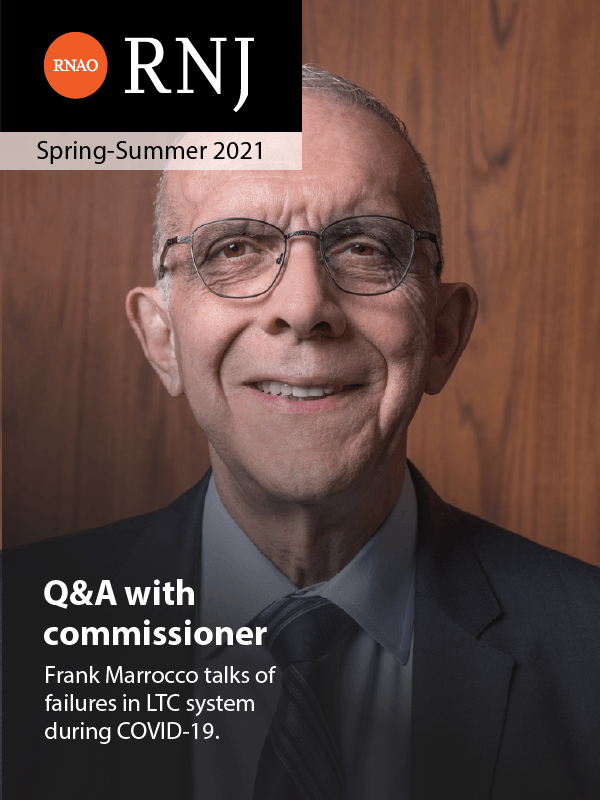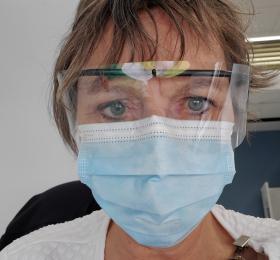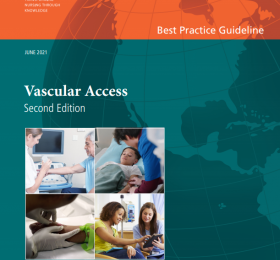RNAO spoke out against a series of disruptive protests that took place outside health organizations in September.
Spring-Summer 2021


Indigenous Nurses and Allies Interest Group (INAIG)
Ontario announced on Sept. 1 that, beginning Sept. 22, people must show proof they have received both COVID-19 vaccinations before they can enter high-risk indoor public settings such as bars, casinos, gyms, theatres and indoor dining at restaurants.
RNAO responded to the province’s school reopening guidelines, outlining gaps in the plan. Ontario students lost more days of in-person instruction than those in any other province or territory.
Many Ontario RNs and NPs will leave the profession, retire early or switch to part-time work due to the workload and emotional toll of COVID-19, RNAO found in its Work and Wellbeing Survey results. About 13 per cent of early-career RNs say they will be leaving the profession compared to the usual attrition of three per cent.
The Ontario government pledged more than $117-million to a project to get nursing students into hospitals to help assist with tasks such as bathing, feeding and making beds.
At the Seymour-Hannah Sports and Entertainment centre in Niagara, a colourful display of hope covers the glass of the main rink.* The mosaic is comprised of post-it-note messages from attendees of the clinics expressing their relief, hope and gratitude.
The University of Calgary in Qatar (UCQ) is the first academic institution in the Middle East to become an RNAO Best Practice Spotlight Organization (BPSO).
Retired RN Lois Gilmour recently came out of retirement to help vaccinate her community. Gilmour graduated from the Royal Victoria School of Nursing at Georgian College in 1979. She retired in 2018, after working for 18 years at Orillia Soldiers’ Memorial Hospital.
In June, RNAO published the Vascular Access, Second Edition BPG. This latest edition provides nurses and interprofessional teams with evidence-based recommendations and resources related to the insertion, assessment and maintenance of vascular access devices in the infant, pediatric and adult populations.




